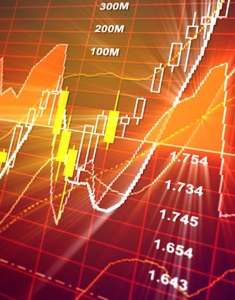 LONDON | Who will set the alarm bells off, again? Amid so much scarring noise coming from the euro area, watchdogs may inadvertently pass by seeds of future financial crashes. This time, the hint is that most financial advisers in the City admit to have little or no understanding of the exchange traded funds' structure, but up to 30 percent in the industry keep some 5 percent of their clients' assets allocated in these passive instruments.
LONDON | Who will set the alarm bells off, again? Amid so much scarring noise coming from the euro area, watchdogs may inadvertently pass by seeds of future financial crashes. This time, the hint is that most financial advisers in the City admit to have little or no understanding of the exchange traded funds' structure, but up to 30 percent in the industry keep some 5 percent of their clients' assets allocated in these passive instruments.
Skandia UK, the largest retail investment platform operator in the financial capital of Europe with £33.4 billion funds under management, said Monday that over two thirds of advisers had indicated their knowledge about the structure of synthetic exchange traded funds or ETFs is poor, and over half of them could not explain how asset-based ETFs work, either.
In spite of the apparently scant use, already in mid-2011 synthetic ETFs moved a volume of money four times larger in the now dramatically wobbly European markets than in the US.
Pension funds and retail investors for instance, believed to be cautious participants in the capital markets' roller coaster, show a high regard for ETFs. There's a reason for their appetite: ETFs track a stock index or fixed rate index, but merely trace them instead of making any purchase of the underlying asset.
One investor in the regional stock market in Barcelona can put money into Acción Ibex 35 ETF, which simply follows the Spanish index without in fact buying any bond or shares of a Madrid-listed company.
Here, diversion effects begin to emerge and could surely make the markets tumble if taken to the extreme. How? Director of db x-trackers ETF Marco Montanari told Risk Magazine:
“When trading an EFT linked to an underlying value that is not trading, the EFT becomes an independent animal that moves just on the basis of the demand for the EFT, not the underlying asset.”
In its report, Skandia highlighted that the British Financial Services Authorities have already expressed concern over the complexity of ETFs and the lack of expertise among both advisers and customers. Skandia's Graham Bentley said this will lead to a decrease in their presence in investment portfolios.
“The structure of ETFs can be inherently complicated… With a general lack of understanding and increased scrutiny over the use of ETFs it is likely that demand for ETFs will remain limited.
“One of the benefits that have often been touted about ETFs is that they are a low cost passive solution. However, there are other ways for investors to access low cost passive investment solutions.”
The size of ETF or exchange traded funds in the global markets exceeded last year one trillion of euros, with a 40 percent average annual expansion since 2000, according to data from BlackRock.





